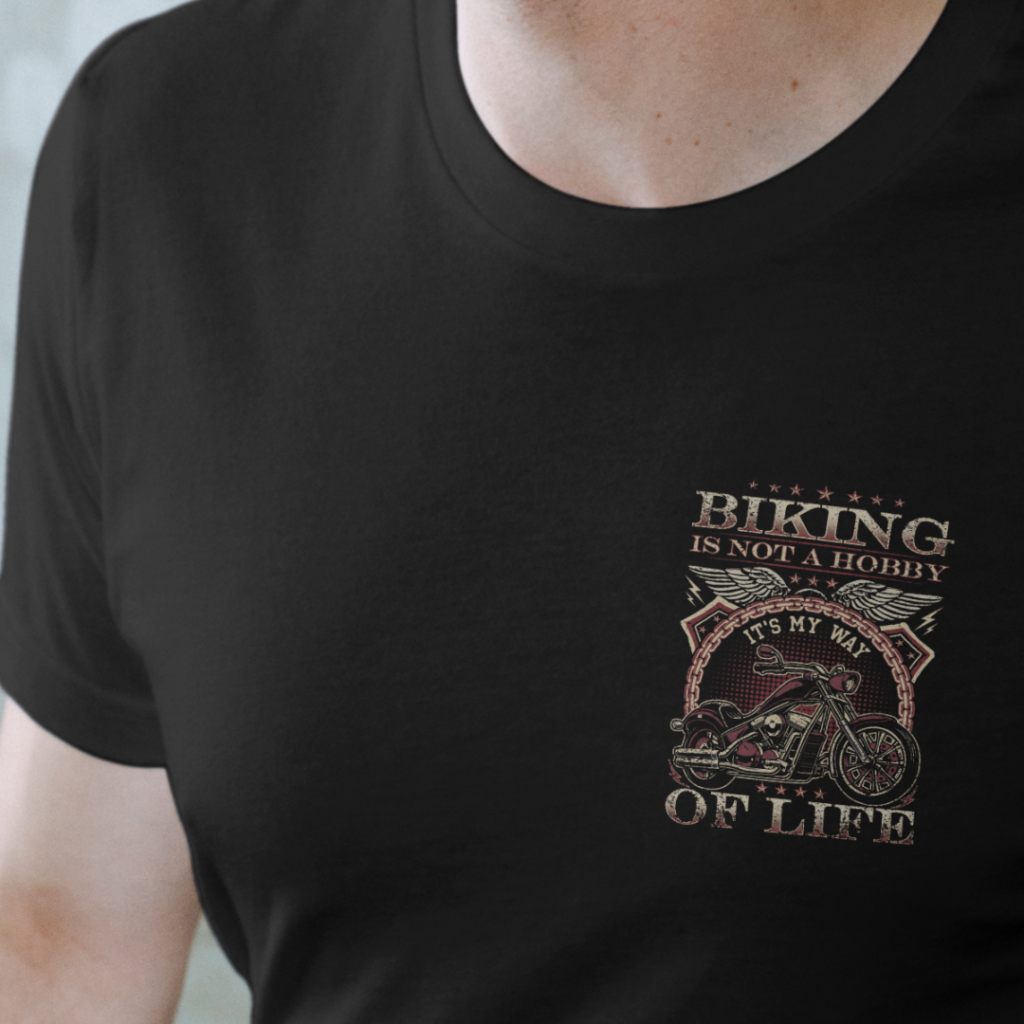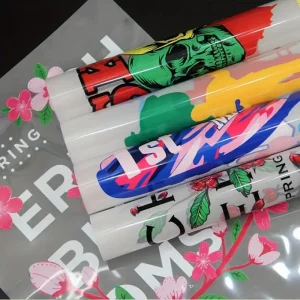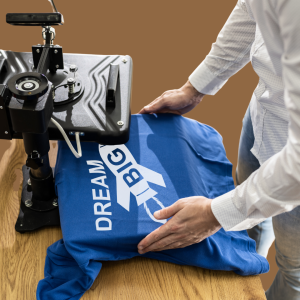Ultimate Guide to T-Shirt Fabrics: Choosing the Best Material for Comfort and Style
T-shirts are a wardrobe staple across the world. Whether you’re dressing for comfort, style, or function, the humble tee always delivers. But have you ever wondered what goes into making that perfect t-shirt? It’s not just the cut or the print—it’s the fabric that makes all the difference.
In this guide, we’ll take a deep dive into the different types of fabrics used to make t-shirts. Whether you’re a fashion enthusiast, brand owner, or just love your tees, this blog will help you understand fabric options, their pros and cons, and how to choose the best one for your needs.
Why Fabric Matters in a T-Shirt
Before we explore the types, let’s understand why fabric choice is crucial:
- Comfort: Some fabrics are soft and breathable; others may feel rough or stiff.
- Durability: Certain fabrics withstand repeated washing and wear better than others.
- Style & Fit: The stretch, drape, and finishing details all influence the appearance and fit of a t-shirt.
- Cost: Fabric impacts price—basic cotton is cheaper than high-end blends.
- Purpose: Sportswear, casual wear, luxury fashion—all demand different fabric properties.
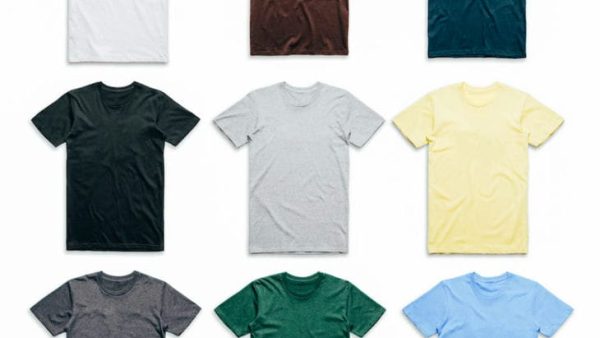
Alright, let’s check out the most popular t-shirt fabrics!
100 % Cotton
Cotton continues to be the go-to fabric for making t-shirts, loved for its comfort and versatility.
It’s made from natural fibers and is known for its comfort and breathability.
Pros:
- Soft and comfortable
- Breathable and hypoallergenic
- Affordable and widely available
- Easy to print on (perfect for designs)
Cons:
- Shrinks if not pre-shrunk
- Can wrinkle and fade
- Absorbs moisture (not great for activewear)
Popular Varieties:
Combed Cotton: Smoother and stronger due to the removal of short fibers.
Ring-Spun Cotton: Smoother, stronger, and longer-lasting compared to standard cotton.
Organic Cotton: Cultivated without synthetic chemicals; environmentally friendly but
typically higher in cost.
Cotton Blends (e.g., 60/40 Cotton-Poly)
Blending cotton with synthetic fibers like polyester creates a fabric that combines the best of both worlds.
Pros:
- Retains shape better than 100% cotton
- Less prone to shrinking or wrinkling
- Often more affordable
- Easier to care for (machine-wash friendly)
Cons:
- Less breathable than pure cotton
- Might feel less soft or natural
- Not always eco-friendly
Blends are often labeled as CVC (Chief Value Cotton) when cotton makes up the majority. For example, a 60/40 cotton-poly blend.
100% Polyester
Pros:
- Lightweight and strong
- Quick-drying and moisture-wicking
- Resistant to wrinkles and shrinkage
- Great for performance/sportswear
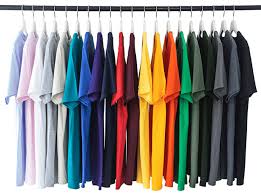
Cons:
- Not breathable like cotton
- Can feel synthetic or plasticky
- Prone to pilling over time
- Not biodegradable
Engineered for durability and built-in moisture control, this synthetic fabric is a top pick for athletic wear and high-performance clothing.
100% polyester is a popular choice for dry-fit and athletic t-shirts due to its moisture-wicking properties and durability, making it ideal for activewear.
Tri-Blend (Cotton + Polyester + Rayon)
Tri-blend fabric is made from three materials (50% polyester, 25% cotton, and 25% rayon) provides a distinctive texture and soft feel.
Pros:
- Ultra-soft and lightweight
- Stretchy with a flattering fit
- Vintage or heathered look
- Doesn’t shrink easily
Cons:
- More expensive
- Less vibrant print results
- Slightly more delicate (care needed when washing)
- Tri-blends are popular in fashion-forward brands and premium lifestyle T-Shirts.
Rayon (Viscose)
Is a fiber partially derived from wood pulp through a semi-synthetic process, well known for its smooth, silk-like feel. It
Pros:
- Incredibly soft and drapey
- Lightweight and breathable
- Adds sheen and elegance to the tee
Cons:
- Not as durable as cotton or polyester
- Can shrink or stretch when washed
- Requires gentle care
- Rayon is commonly use for women’s fashion t-shirts.
Bamboo Fabric
Is an eco-friendly alternative to conventional textiles. Made from the pulp of bamboo plants, this fabric is valued for its soft feel, excellent breathability, and natural ability to resist bacteria.
Pros:
- Silky soft and breathable
- Naturally antibacterial and moisture-wicking
- Eco-friendly (if responsibly sourced)
- Hypoallergenic
Cons:
- Can be pricey
- Often blended with cotton or spandex
- Not all bamboo fabric is sustainable (watch for greenwashing)
- Bamboo is commonly found in yoga wear, luxury t-shirts, and sustainable fashion lines.
Linen
Although not as common as cotton, linen t-shirts are sought after for hot climates due to their breathability.
Pros:
- Excellent airflow
- Light and natural texture
- Highly absorbent
Cons:
- Prone to wrinkling
- Less stretchy or fitted
- Can feel coarse if not blended
- Often blended with cotton to soften its texture and improve fit.
Modal & Tencel (Lyocell)
Both are modern, eco-friendly fabrics derived from beech and eucalyptus trees. They’re known for sustainability and softness.
Pros:
- Exceptionally soft and smooth
- Moisture-wicking and breathable
- Resists shrinkage and fading
- Biodegradable
Cons:
- More expensive
- Requires gentle washing
- Often found in blends (not always 100%)
- Ideal for upscale tees and brands focused on comfort and sustainability.
Spandex (Elastane/Lycra)
You won’t find many t-shirts made of 100% spandex, but it’s commonly blended with other fibers to add stretch and flexibility.
Pros:
- Adds stretch for active or tight-fit tees
- Retains shape
- Great for movement
Cons:
- Not breathable on its own
- Can deteriorate with heat or harsh washing
- Most stretchy tees include around 5–10% spandex.
Jersey Knit
Jersey isn’t a fiber but a knit style, usually made from cotton, polyester, or blends. It’s popular for casual tees due to its stretch and softness.
Types:
Single Jersey: Lightweight and soft
Double Jersey: Thicker and more structured
Jersey fabric feels smooth on one side and slightly textured on the other. It’s the default fabric for most ready-to-wear t-shirts.

How to Choose the Right T-Shirt Fabric
When picking a t-shirt—whether for personal use, fashion design, or a clothing business—consider these key factors:
✅ Purpose:
For workouts → polyester or blends with spandex
For daily wear → cotton, blends, or tri-blend
For luxury feel → modal, bamboo, or Tencel
✅ Climate:
Hot & humid → linen, bamboo, or cotton
Cooler areas → thicker blends or tri-blends
✅ Care Level:
Low-maintenance → cotton-poly blends
High-end/luxury → modal, rayon, or bamboo (gentle wash needed)
✅ Printing Method:
Cotton takes prints better than polyester or rayon.
Tri-blends give a vintage, muted print effect.

